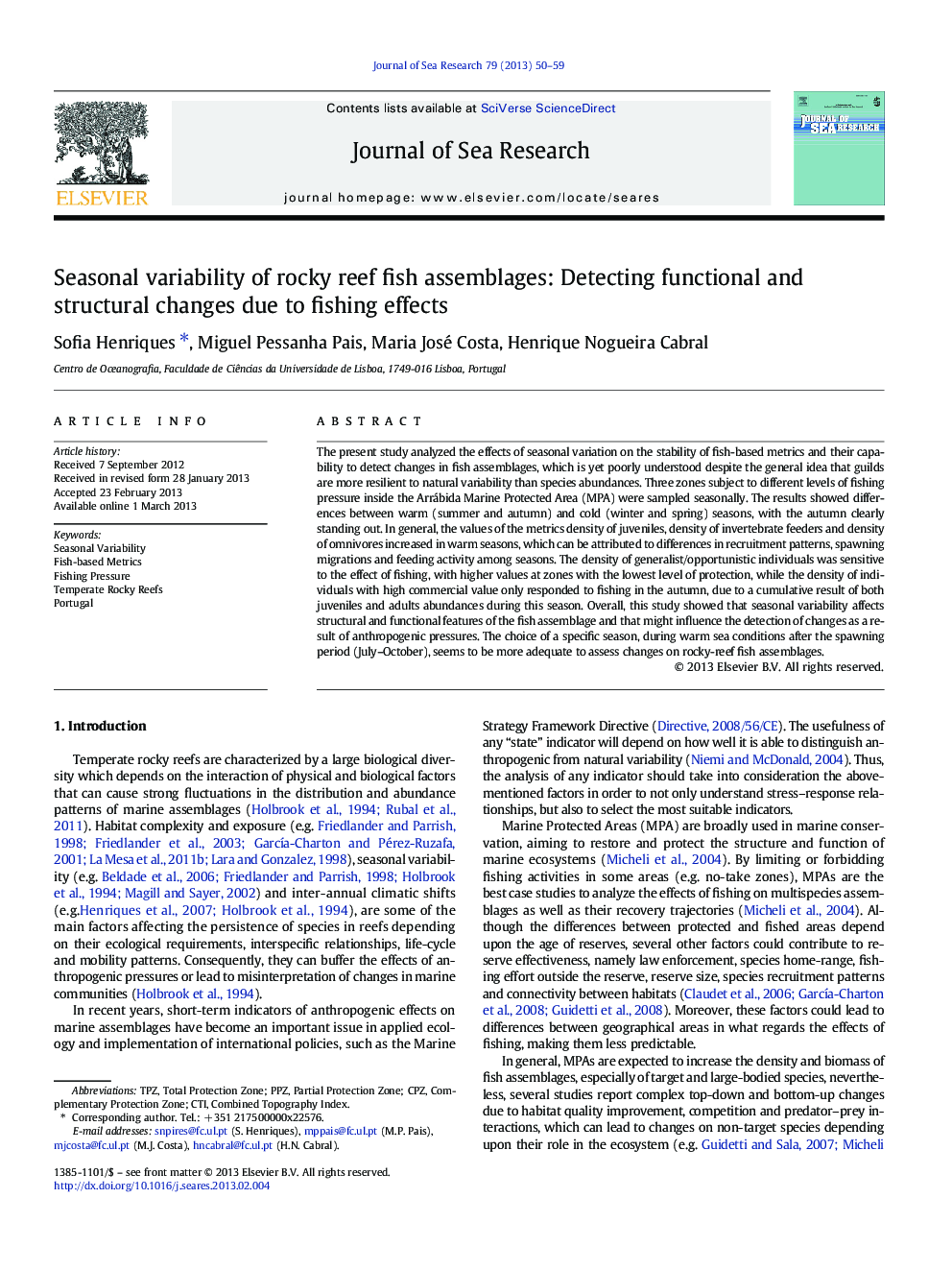| Article ID | Journal | Published Year | Pages | File Type |
|---|---|---|---|---|
| 4549945 | Journal of Sea Research | 2013 | 10 Pages |
•Strong differences between warm and cold seasons were observed in fish-based metrics.•Seasonality can influence the detection of changes due to anthropogenic pressures.•Higher metric sensitivity is expected in warm seasons after the spawning period.
The present study analyzed the effects of seasonal variation on the stability of fish-based metrics and their capability to detect changes in fish assemblages, which is yet poorly understood despite the general idea that guilds are more resilient to natural variability than species abundances. Three zones subject to different levels of fishing pressure inside the Arrábida Marine Protected Area (MPA) were sampled seasonally. The results showed differences between warm (summer and autumn) and cold (winter and spring) seasons, with the autumn clearly standing out. In general, the values of the metrics density of juveniles, density of invertebrate feeders and density of omnivores increased in warm seasons, which can be attributed to differences in recruitment patterns, spawning migrations and feeding activity among seasons. The density of generalist/opportunistic individuals was sensitive to the effect of fishing, with higher values at zones with the lowest level of protection, while the density of individuals with high commercial value only responded to fishing in the autumn, due to a cumulative result of both juveniles and adults abundances during this season. Overall, this study showed that seasonal variability affects structural and functional features of the fish assemblage and that might influence the detection of changes as a result of anthropogenic pressures. The choice of a specific season, during warm sea conditions after the spawning period (July–October), seems to be more adequate to assess changes on rocky-reef fish assemblages.
